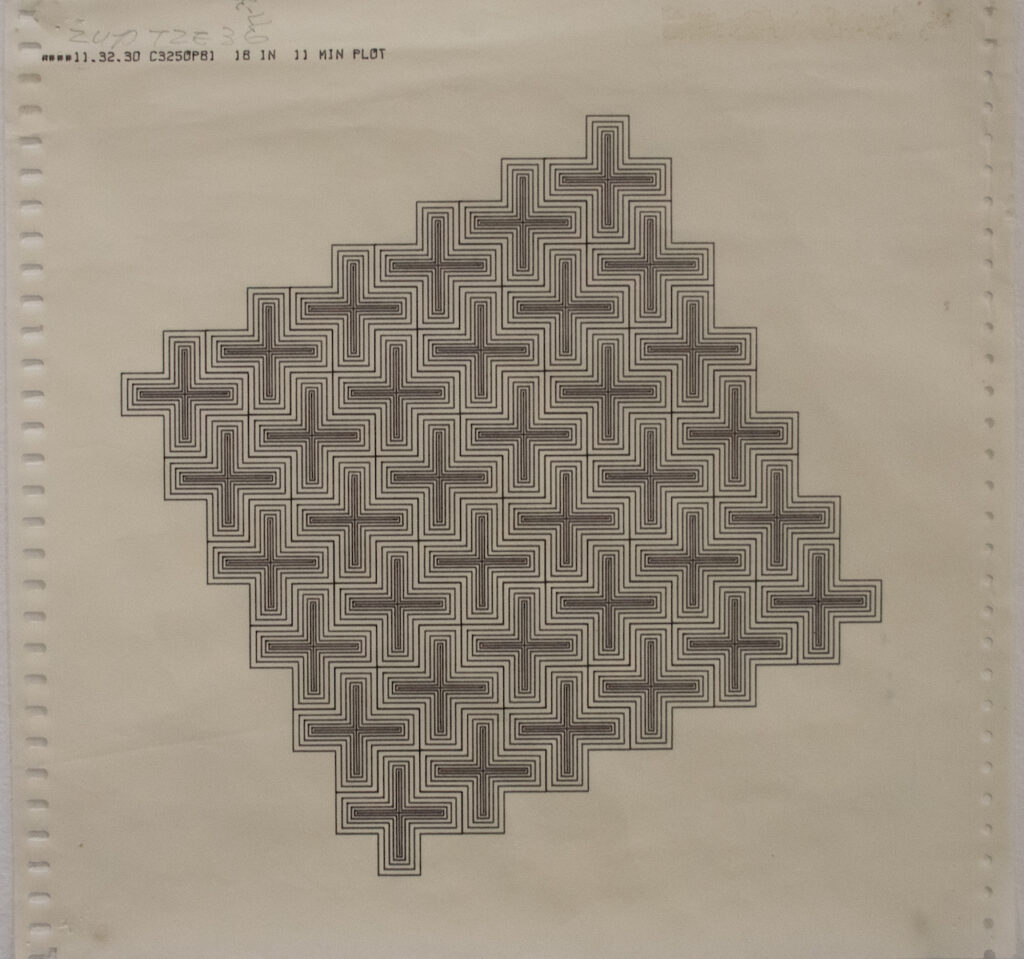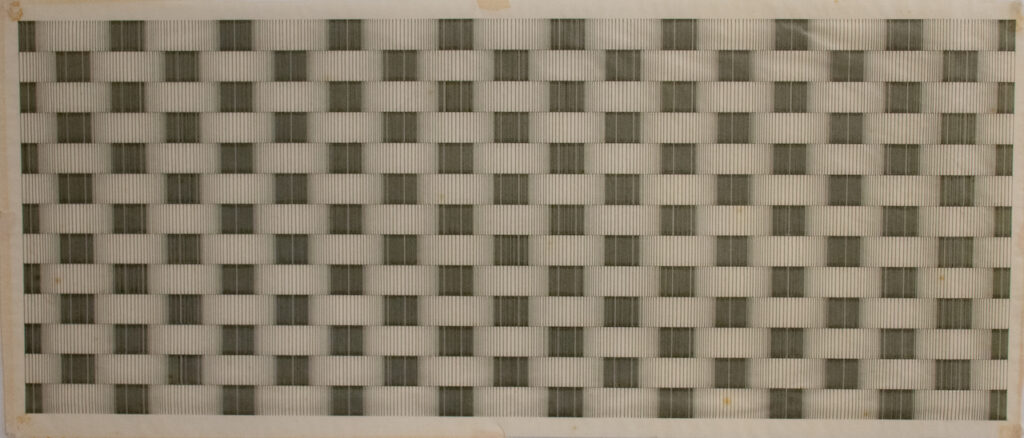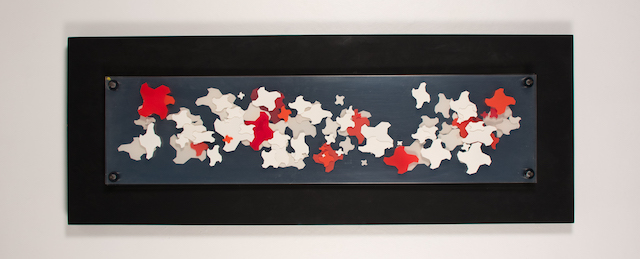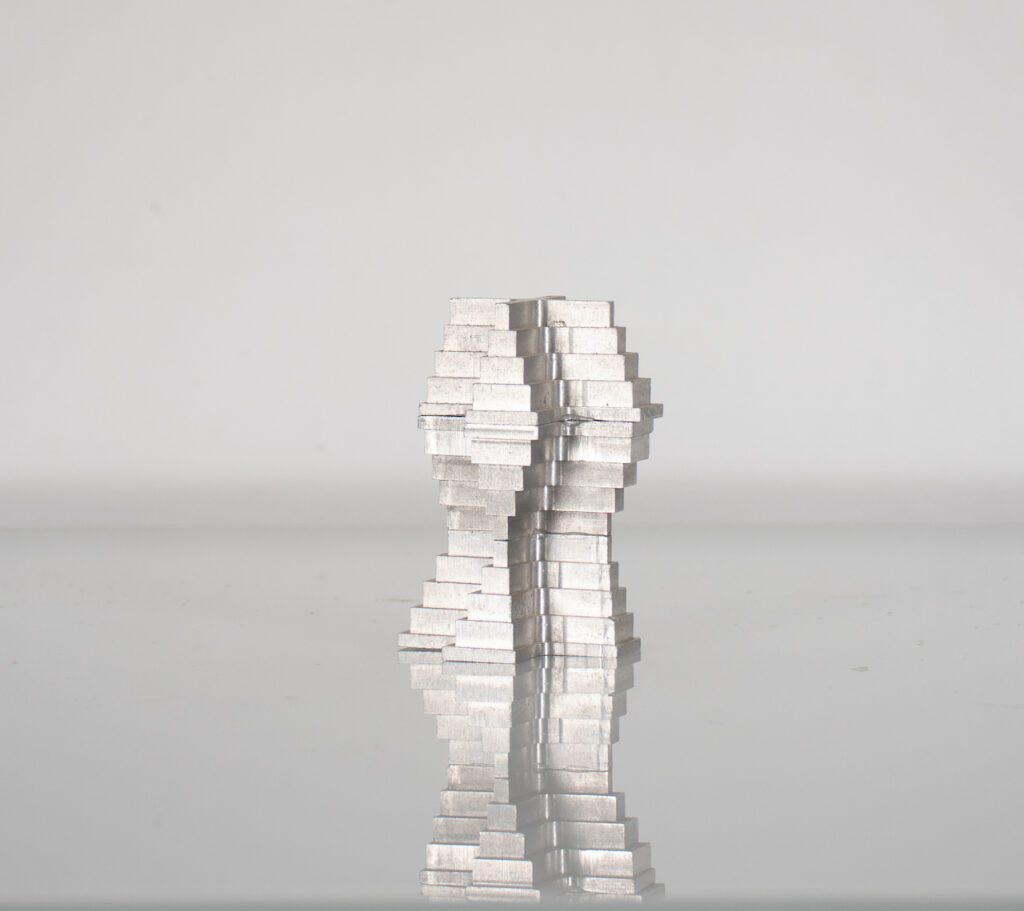PAUL SHAO AND KEN DUNKER —
COMPUTER AIDED DESIGN IN THE 1970S
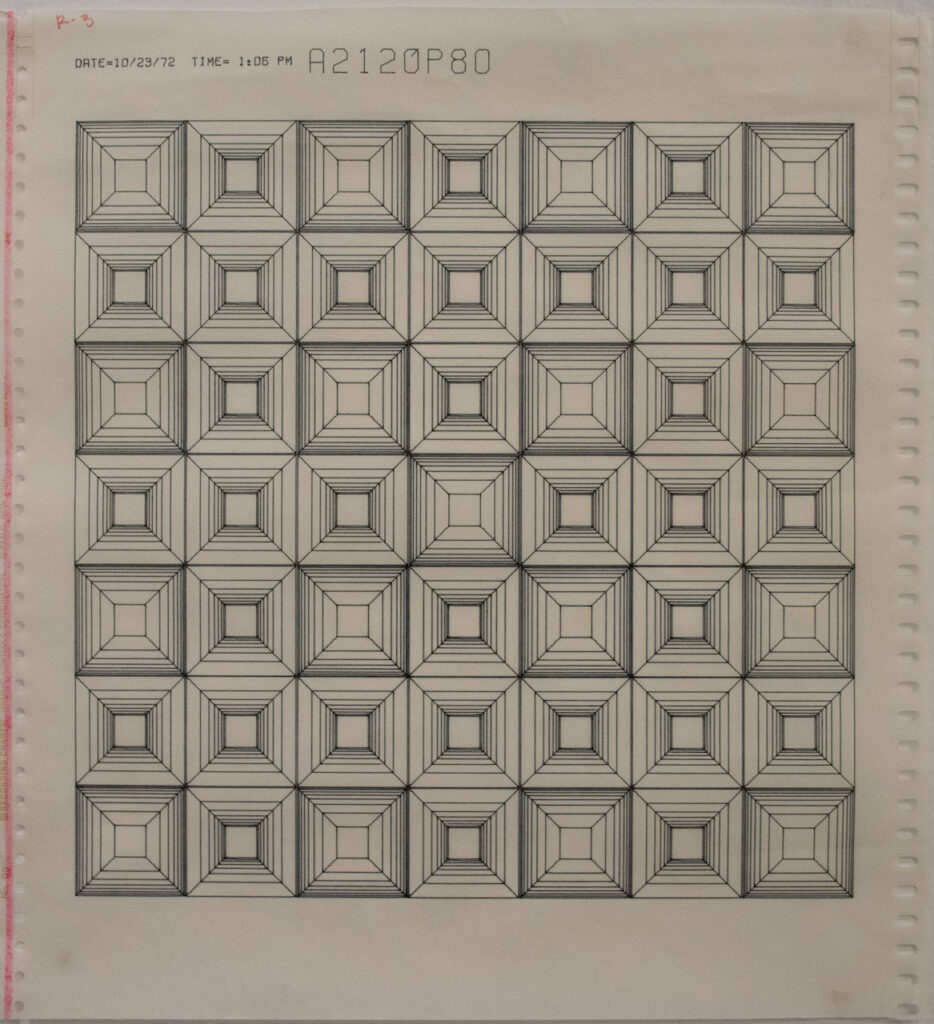
Paul Shao (Master of Fine Art, University of Massachusetts 1970) and Ken Dunker (Master of Science, Cornell University 1967) both started teaching at Iowa State University in 1970. They developed a synergistic art and technology partnership which resulted in creations exhibited and published worldwide. Shao and Dunker’s work mostly deals with linear projection and modular groupings, using the PICS program written in Fortran, which they used to develop projections of flat, cylindrical and spherical objects.
Their graphics were produced in the 1970s with an IBM 360-65 computer and a Calcomp incremental plotter at the Computation Center of Iowa State University, the birth place of the world’s first computer.
For the drawings, they used one of two programs: Pics, a Fortran program developed to generate perspective drawings from one- two- and three-dimensional data. Perspectives may be projected onto flat, cylindrical or spherical picture planes.
Colip, which generates varying tonal fields through the use of closely spaced lines. Variables include angles of lines, spacings of lines, and rates of change of angles or density. By manipulating the cones of vision, the station points, modular juxtapositions and permutations, Paul and Ken strived to create optical illusion of bas-reliefs and/or three-dimentional structures on a flat picture plane.
Applying the Gestalt Principles of Design, they succeeded in generating new visual designs, the total effects of which, were much more vibrating than the simple additions of parts.
This endeavor led to the next phase of the creative journey of the 4 dimensional sculptural adventure–3 dimentional undulating biomorphic forms plus time–growth.
Their precise style offered subtle changes in linear elements that produced appealing gray value graduations and distributions in an optical art style.
“At this current state of development, the significance of the computer lies not so much in its creativity or originality, but rather in its ability to provide alternatives,” said the duo in the magazine Computer Graphics and Art.
“The computer’s consistency, accuracy, speed and clarity in the representation of linear figurations prove to be an excellent tool for artists and architects. It becomes useful to the user not only in the final process of realization but also in the initial phase of the design. It helps the designer to come up with different variants and possibilities.” They continued, “Although the line is one of the most important elements in the repertoire of design representation, it is not the only possible one. However, no matter how creative a computer artist is, they are currently unable to used these other elements adequately and directly. The computer is unable to combine elements harmoniously and dynamically into an organic whole; it has no empathy, no human warmth and spontaneity. So its function is more that of a useful instrument than a machine that creates art.”
Shao’s artistic activities continued to expand over the decades; particularly in sculpture, where he applied his talents to developing a repertoire sensual biomorphic sculptures in marble. He also has played a continued role in the promotion of Chinese culture, penning books on the subject of Chinese art, and playing an active role in the Chinese Cultural Center of America.
